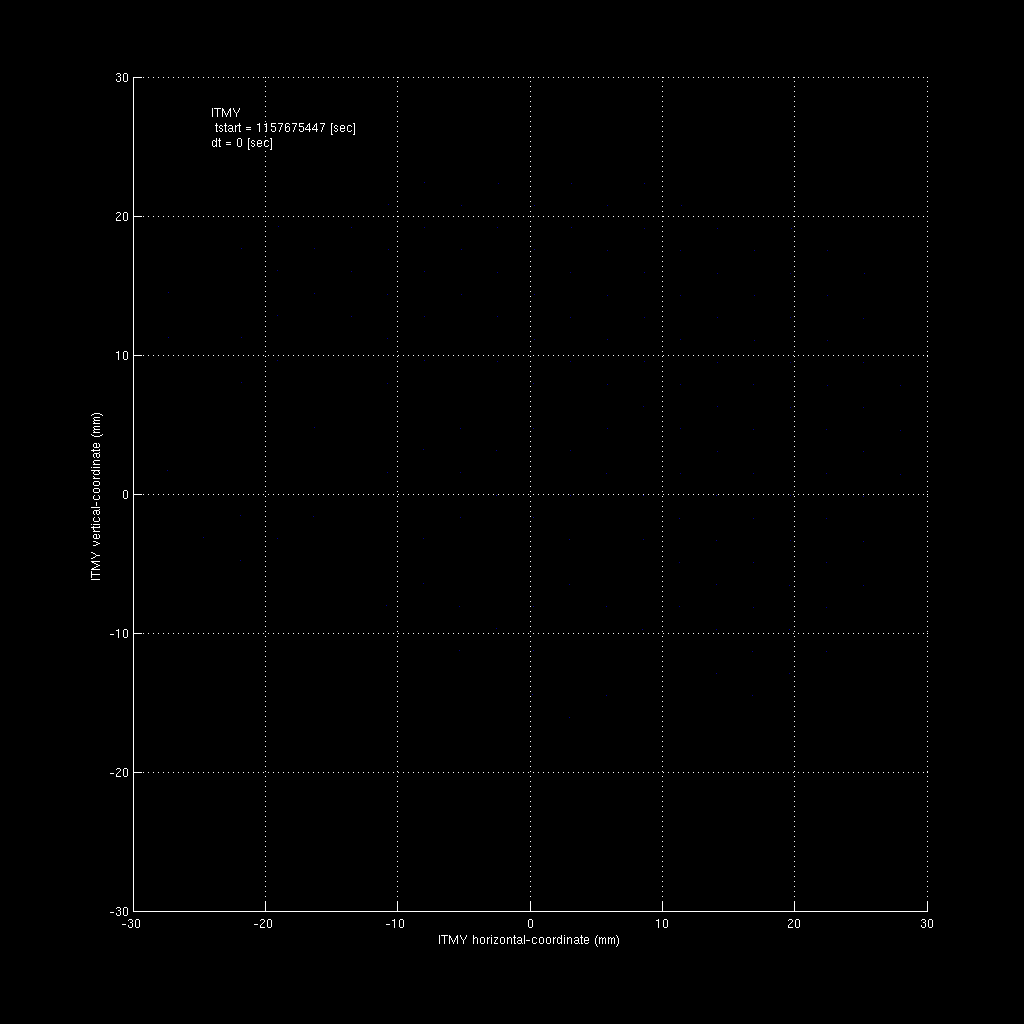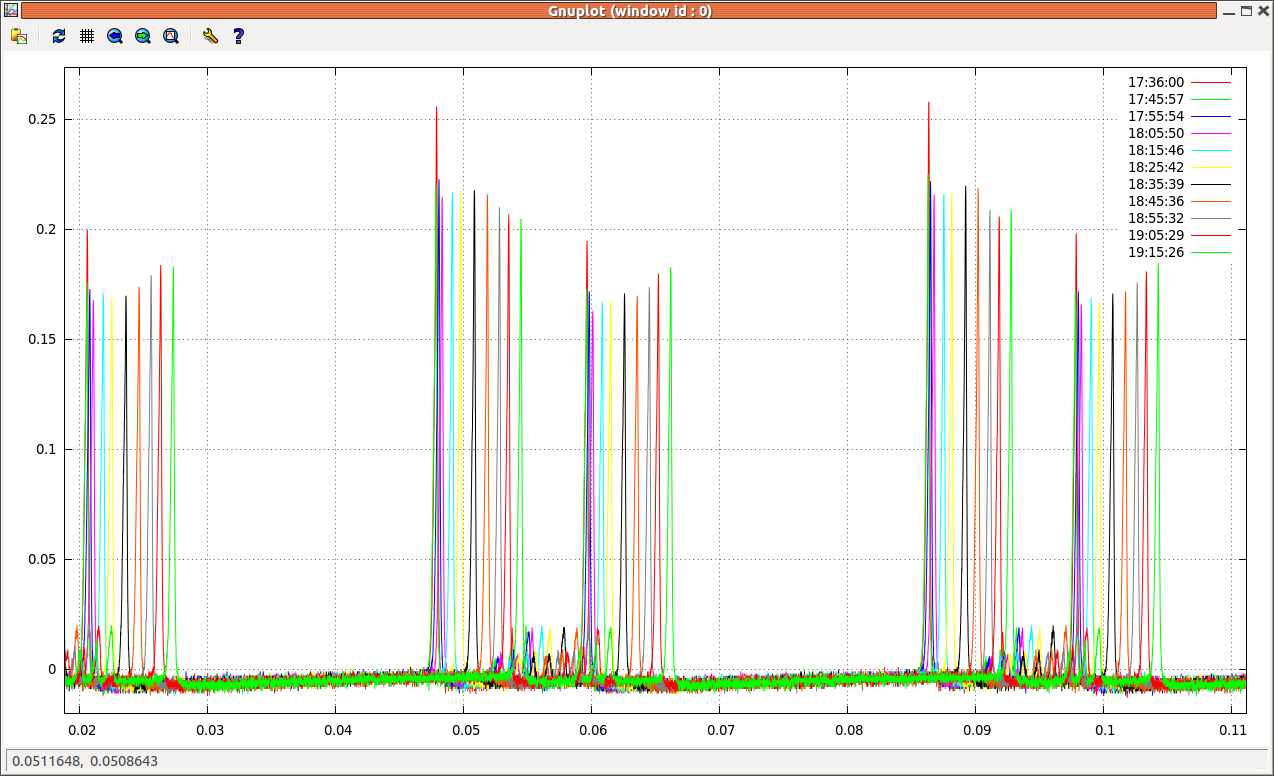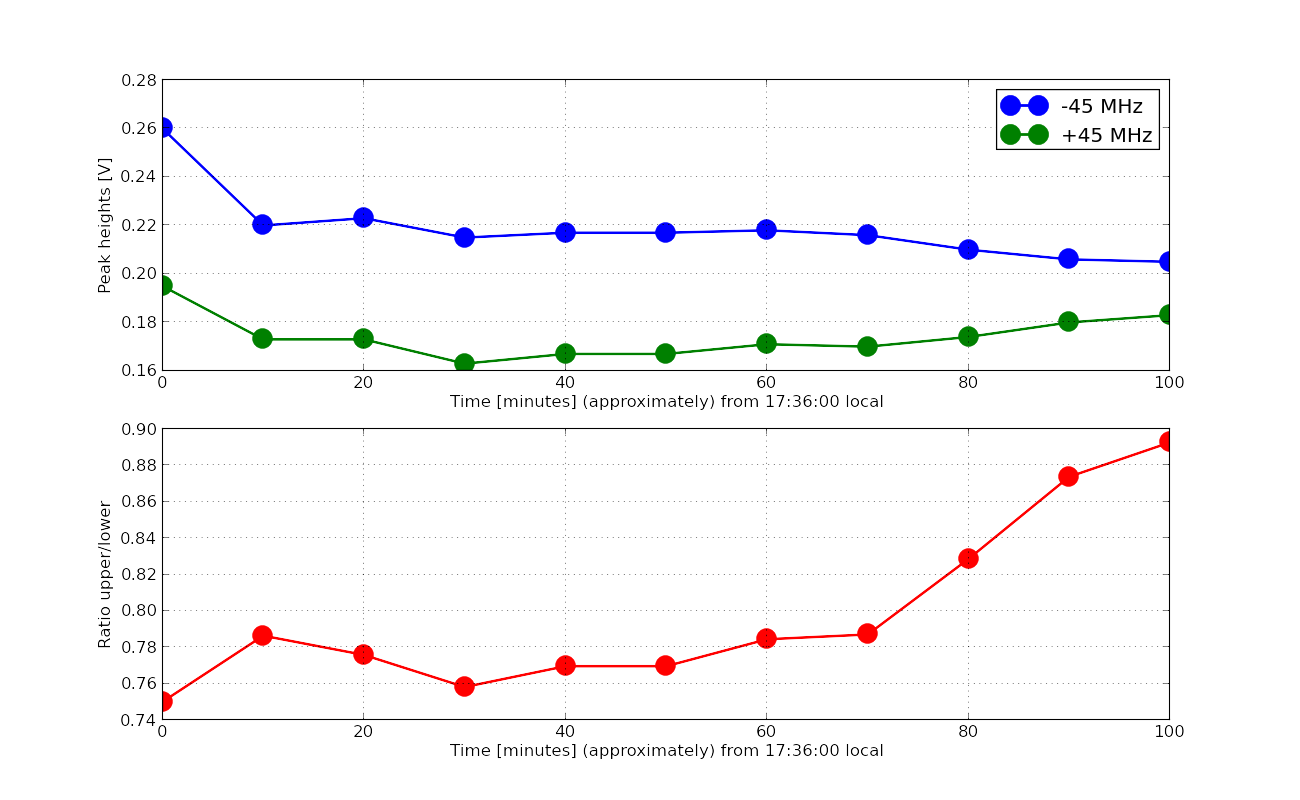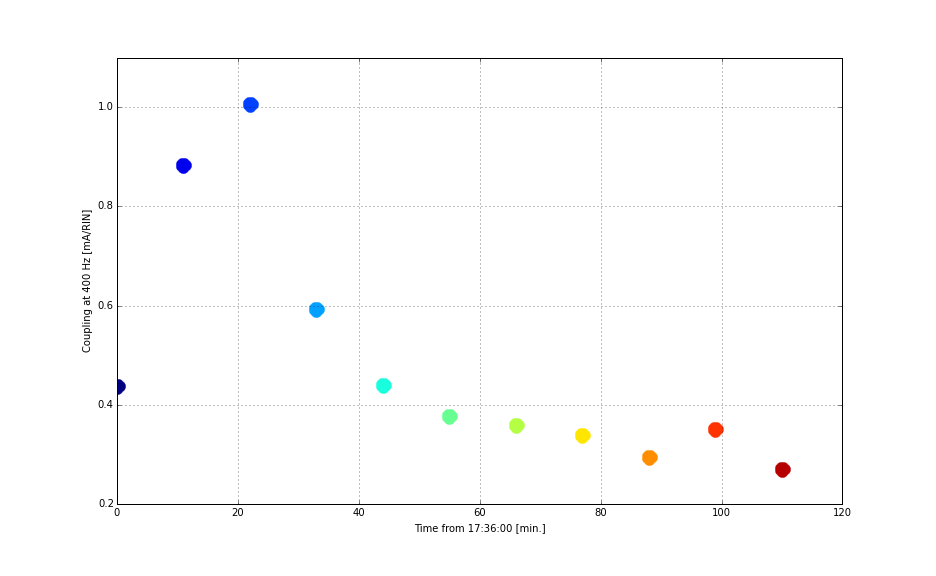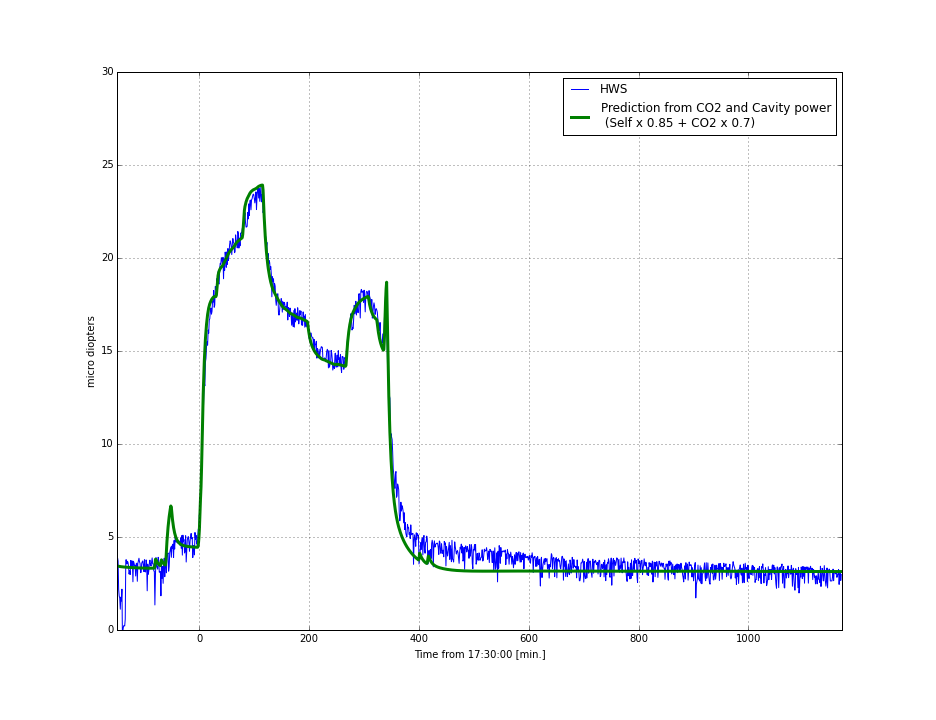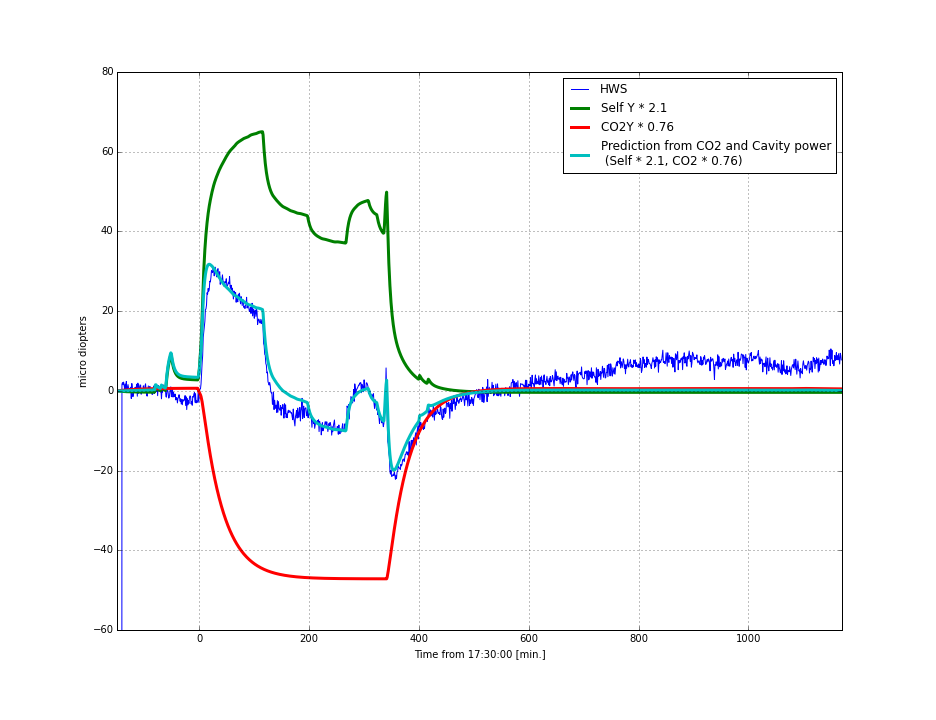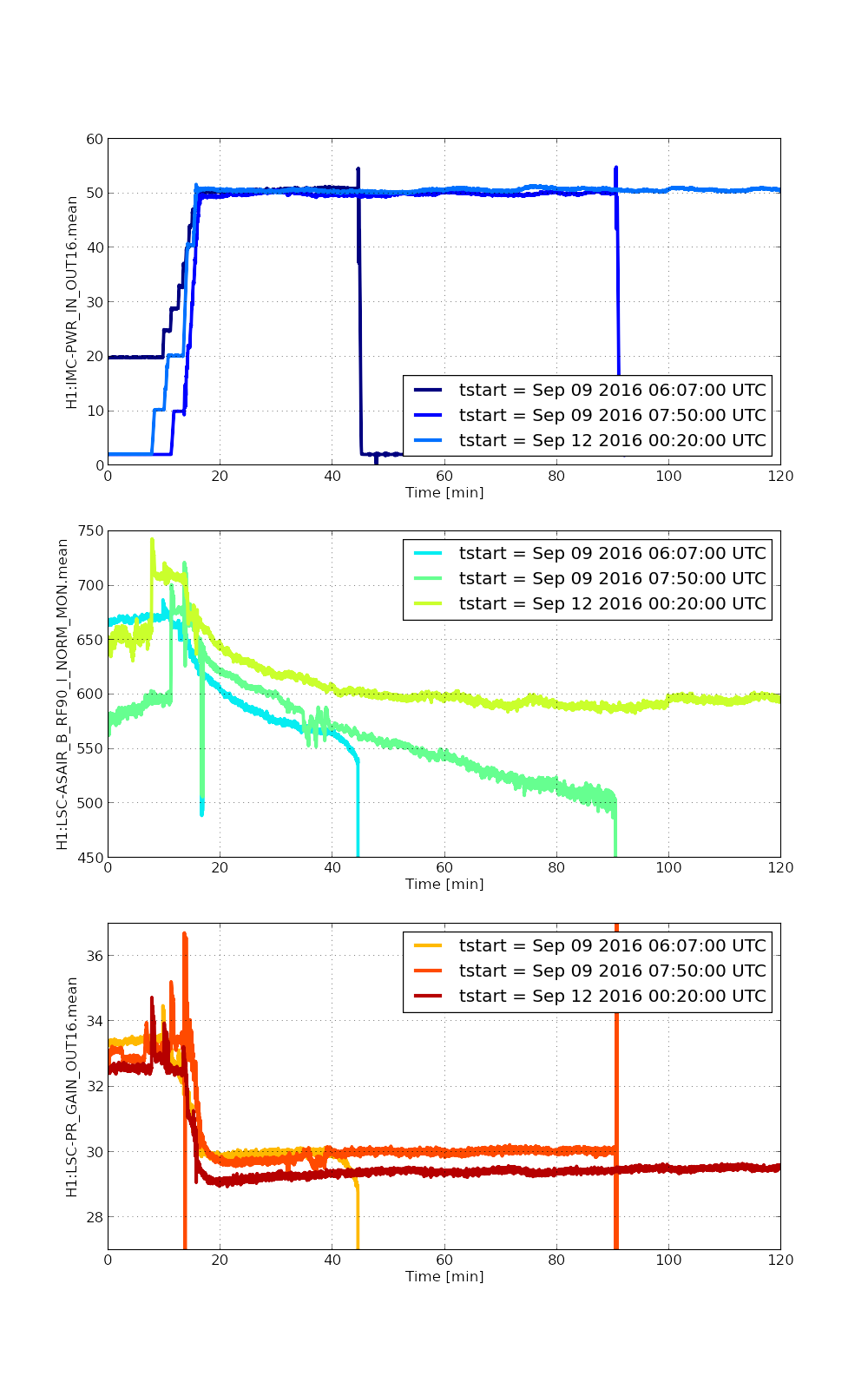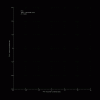Evan H., Jenne, Matt, Kiwamu,
We locked the interferometer at 50 W with the latest ring heater setting (RHX = 0.5 W, RHY = 2.5 W, 29588). So far the interferometer has been locked at 50 W for roughly 1 hour.
P.S. we have now having difficulty damping a PI mode (mode2, 15520 ITMX) and decreased the PSL power back to 30 W.
[DRMI lock on POP sensors]
As reported yesterday (29601), we had a difficulty in switcing the sensors from the 3fs to 1fs earlier today (29603). In the end, I manually executed the sensor switch process one by one and for some reasons this was successful. I then measured the open loop transfer functions of the DRMI LSC degrees of freedom, but they looked OK. See the first attachjment. This may be due to that we did not wait for long enough time to let the new CO2 setting settle (29603) for lock acquisition ([CO2X, CO2Y] = [500 mW, 1000 mW]). Not sure.
Also, in lock acquisition, I manually kept aligning PR3 when the interferometer was at ANALOG_CARM in order to maintain the lock.
[CO2 tuning at 50 W]
This is not well tuned, but the below is an OK CO2 tuning for 50 W which gave us a 30% imbalance at the AS port OSA.
[CO2X, CO2Y ] = [300 -400 mW, 0W]
This time I did not spend time for tuning the dCO2 at 20 W or 40 W. Maybe I should have done that to collect more data points.
[PIs]
MODEs 17 and 27 needed a sign flip. Mode 27 seems tricky -- every time when it rang up we needed to flip the control sign.
The PI difficulties are probably my fault. The phases may not have been set properly after the power glitch.
After damping PIs (Terra is writing about this) we tried to take the IFO back to 50 W, but lost lock within a few minutes. I'm not sure why we lost lock, it didn't seem to be PI or the usual sidebands tanking problem, there was a glitch in CHARD and DHARD a second before lockloss (1st attachment).
We spent some time relocking and found that we had some problems durring the latter CARM offset reduction steps which were similar to what we had last night. We measured the DARM loop at RF DARM and at the state CARM 15 pm, it seems fine (2nd attachment).
It is possible that our relocking difficulties were due to bad alignment, or the new TCS. As we were about to try to relock the 3rd time, we got hit by an EQ so we stopped for tonight.
Here is some analysis of the sideband imbalance.
Synopsis -- Overall, adjustment of the CO2 lasers I did at 50 W improved the sideband imbalance at the AS port
However, the resulting CO2 setting does not match what we expected from the previous test (29585). We expected the final CO2 settings to be [CO2X, CO2Y] = [100 mW , 0 mW], but we ended up with [400 mW, 0 mW].
The 45 MHz seems to prefer a high CO2 contrast of roughly 400 mW (CO2X minus CO2Y) regardless of the ring heater settings so far, and this prevents us from further reducing the common lens.
[The sideband evolution as seen by the OSA]
The below shows a plot of the OSA raw output. I plotted several scans from different times, each of them is separated almost by 10 minutes in time.
Also, here is a rough time line of what I have done in this lock.
-
17:36 The interferometer reached 50 W
- CO2X and CO2Y were simultaneously reduced to 100 mW and 0 W respectively.
- 18:00 I started increasing CO2X because the sideband imbalance was becoming worse.
- 18:53 I kept increasing CO2X and eventually set CO2X to 400 mW
- 19:24 PSL power was decreased to low power to combat the PIs.
Here is another plot showing how the sideband amplitude evolved as a function of time.
It is evident that increasing CO2X helped reducing the imbalance. Before I started changing CO2X, there was a slow trend in which the imbalance kept decreasing.
Here is another trend plot.
The carrier recycling gain stayed at 29 at 50 W. The sideband build up or ASAIR90 seemed to have reached some kind of equilibrium after approximately 1 hour or so. Also, looking at ASAIR RF 45 Q, I don't see any change in the DARM offset point -- hopefully this is an indication of a stable optical gain. The Pcal line at 331.9 Hz was too small that it was burried below intensity noise. So I could not directly check the DARM optical gain.
The intensity noise coupling changed as a function of time at 50 W. Here is a plot showing several coupling transfer functions from different time.
The measurement time were set to identical to the ones showed in above or 29637. Here is a plot of the transfer coefficient at 400 Hz as a function of time.
As you can see, the coupling became worse at the beginning for about 20 minutes or so. Then it came back to a value as small as the very begining. Although high frequency above 100 Hz seems to have settled to a small coupling, the low frequency part looked worse at the end. See the first attachment.
As for the HWS signals, while the HWSX signal seems reasonable, the HWSY reports a twice large self heating.
Here are some conclusions from comparison of the predicted ITM lensing (outputs from TCS-SIM) and HWS outputs.
-
HWSX
- It looks that we are overestimating the defocus by the self heating in the ITM substrate by 15% or so. This could be due to an inaccurate calibration of the arm power in the TCS simulator.
- The CO2 actuator coefficient needs to be updated to 25 uD/W (28799). Because we use a high value for the CO2 actuation coefficient, the simulator overestimates the effect by 24 %.
-
HWSY
- The below assumes an accurate readout of the HWSY.
- The predicted self heat seems to be too low by almost a factor of two.
- The predicted CO2 defocus is too high by 24% or so. This means the actuation coefficient should be 47 uD/W in the TCS simulator.
- However, a 47 uD/W is not consistent with what we have measured (28799) -- the past measurement suggested that it should be about 25 uD/W.
-
Questions
- Why does the CO2 X now have a smaller actuator coefficient? In the past it was 62.3 uD/W (T1400685).
- Why is the CO2 Y coefficient different from a calibration measurement (28799)? The measurement suggested it was 25 uD/W and now it seems more like 47 uD/W.
- Why the ITMY self heating increased by a factor of two?
The below shows a comparison between the single-pass defocus measured by HWSX and that predicted by simulator (with some coefficient fitting similarly to 27330):
I added a constant offset to the simulated defocus in order to plot it on top of the measured defocus. I removed the ring heater component that was unfortunately in the middle of settling to the equilibrium in the simulator due to the unscheduled model restart (29592).
The below is a same plot, but for the ITMY substrate defocus.
As noted in the legend, the component from the self heat needed to be increased by a factor of two.
The stability of AS90 was apparently better with the combination of the new ring heater setting and dynamically-decreased CO2s.
The below plot shows a comparison of this lock stretch (Sep. 12) and two lock stretches (Sep. 09) from a day before we started changing the ring heater setting.
The two lock stretches from Sep. 09 both showed AS90 decreasing monotonically as a function of time. This was something we have been suffering from (29486) and has been an issue since the begining of this month (29457) at which we considerably changed the interferometer alignment.
In contrast, AS90 settled to a value pf 600 counts on a time scale of 30 minutes or so in the new lock stretch. This lock was stable until PI modes started ringing up. The carrier recycling gain was slightly lower than the previous two stretches. I don't know if this due to misalignment or new ring heater setting.
Here are the evolution of the wavefront gradient as a function of time as seen by the Hartman sensors.
The starting time is set to Sep 12 2016 00:30:30 UTC at which the interferometer was in the middle of powering up to 50 W. The gradients are initilized such that the gradients are zero at dt = 0.

